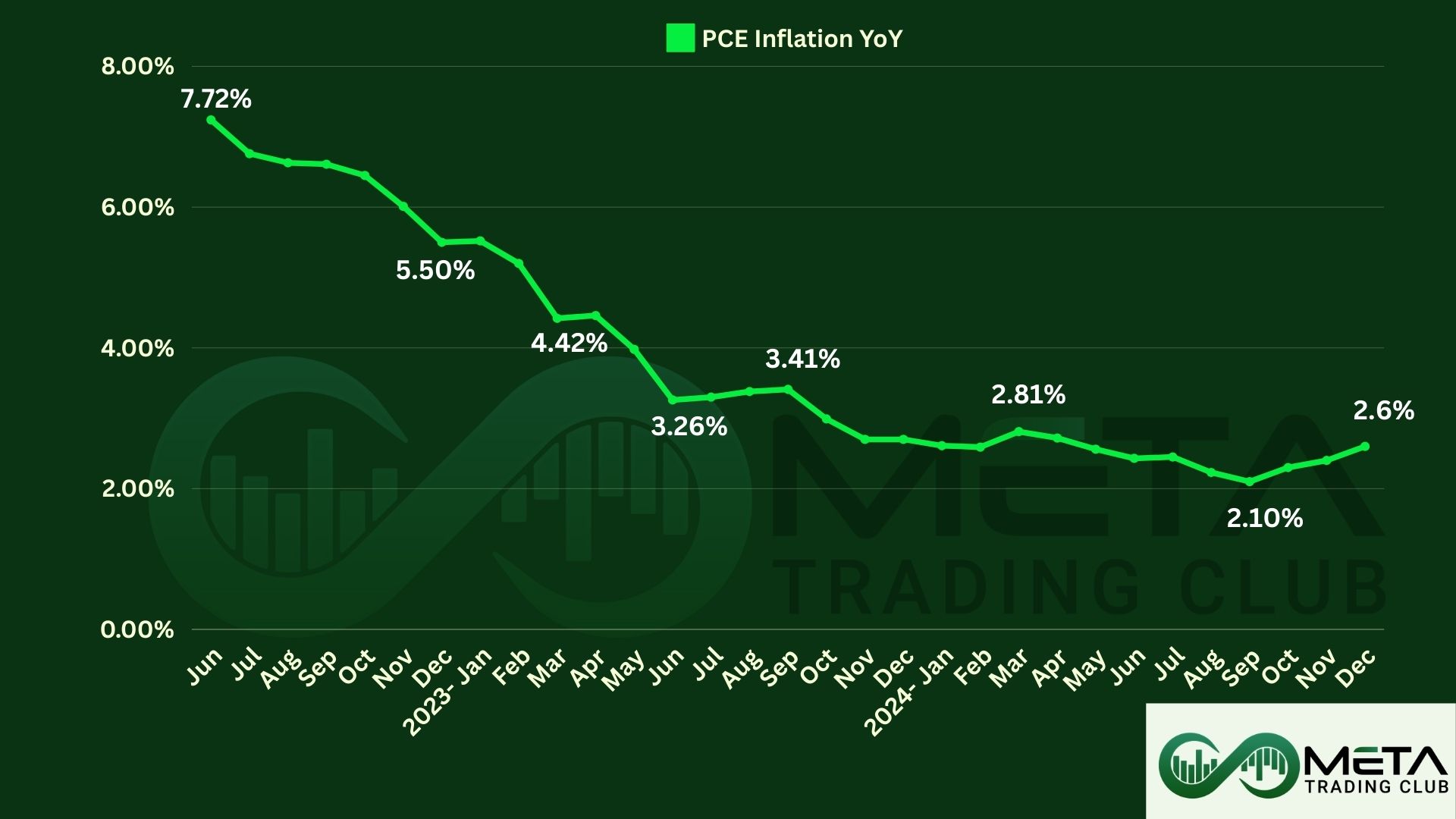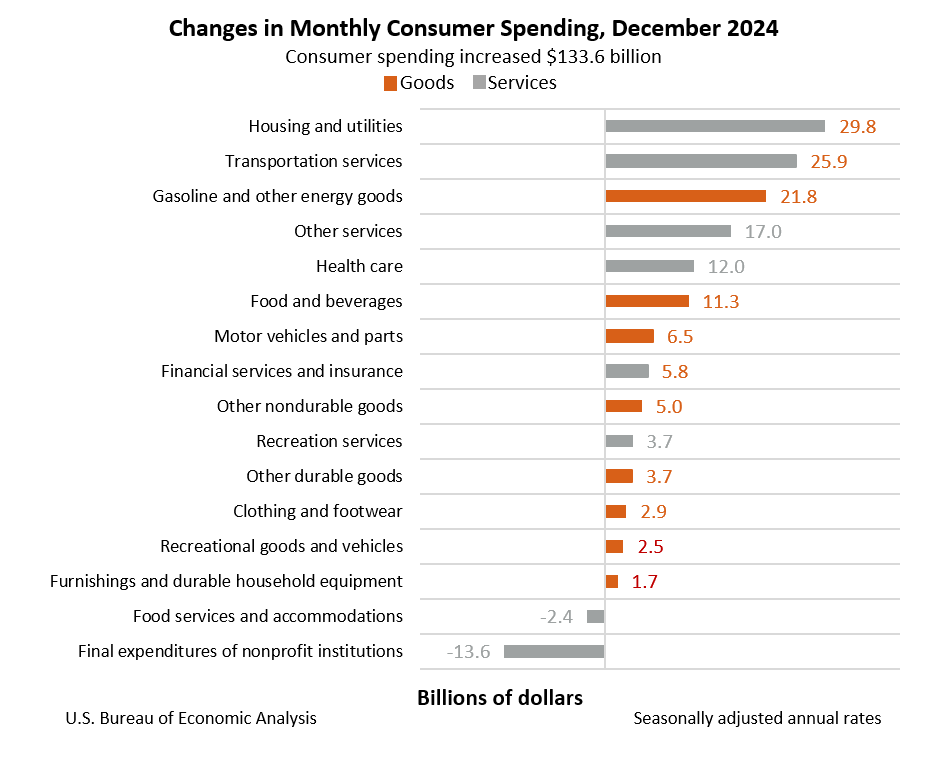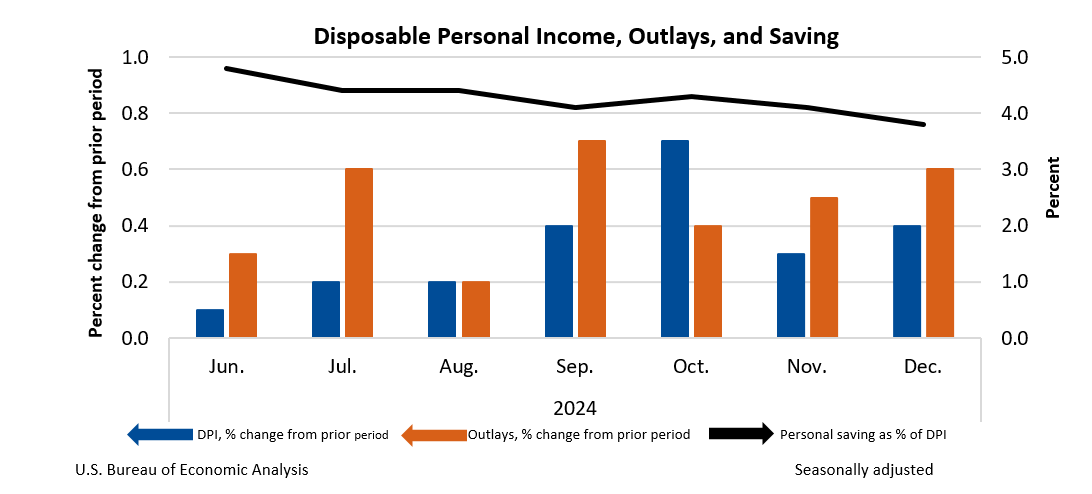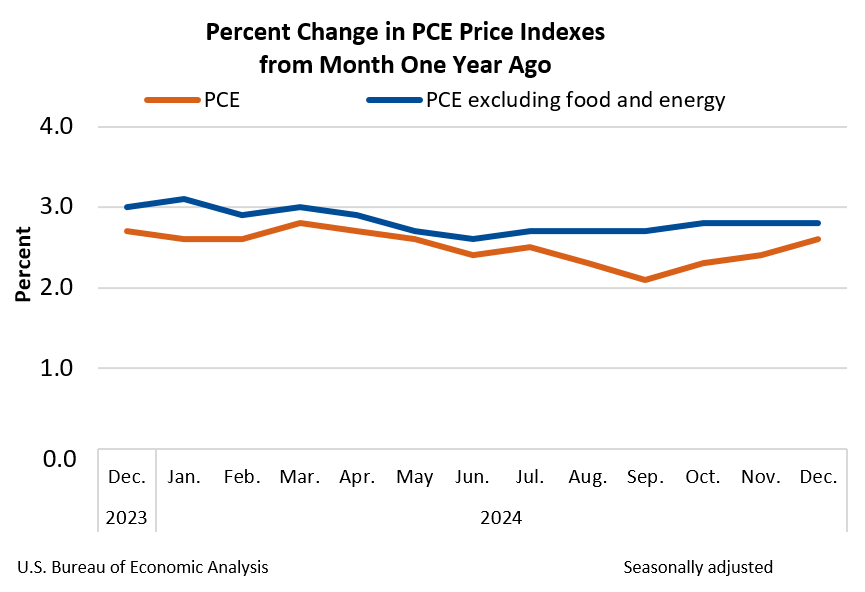The Personal Consumption Expenditures (PCE) Price Index is a key inflation gauge used by the Federal Reserve to assess the prices of goods and services consumed by households. Unlike the Consumer Price Index (CPI), the PCE adjusts for changing consumer behavior, reflecting how people shift spending as prices change. The core PCE, which excludes volatile food and energy prices, is especially watched by policymakers to understand underlying inflation trends. It’s considered a comprehensive measure of inflation and guides decisions on interest rates and monetary policy.
December PCE Price Index
In December 2024, personal income in the U.S. increased by $92.0 billion (0.4%). Disposable personal income, which is income after taxes, also rose by $79.7 billion (0.4%). People spent $133.6 billion (0.7%) more on personal consumption.
Personal outlays, which include spending, interest payments, and transfer payments, went up by $129.5 billion. Personal savings for December were $843.2 billion, with a saving rate of 3.8%.
The rise in personal income was mainly due to higher wages. Spending increases were $78.2 billion for services and $55.4 billion for goods.
The PCE price index, which measures inflation, increased by 0.3% from the previous month. Excluding food and energy, it rose by 0.2%.
Compared to the same month last year, the PCE price index was up by 2.6%, and excluding food and energy, it was up by 2.8%.
These figures reflect the ongoing economic trends and provide insights into consumer behavior and inflation.
Impacts of December PCE Data
The December PCE Personal Income and Spending Report affects the Stock market. The increase in spending shows strong consumer activity, which helps the economy grow.
However, the rise in the PCE price index by 0.3% month-over-month and 2.6% year-over-year points to ongoing inflation. Excluding food and energy, the core PCE price index went up by 0.2% monthly and 2.8% yearly, indicating steady inflation.
This might lead the Federal Reserve to keep interest rates at this level to control inflation, making borrowing more expensive for people and businesses.
The report also impacts investor confidence and market behavior as it provides insights into economic trends and potential changes in monetary policy. Even with increased spending, the personal saving rate of 3.8% shows that people are still saving part of their income.
















